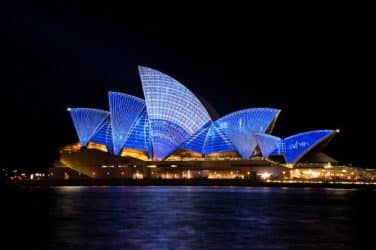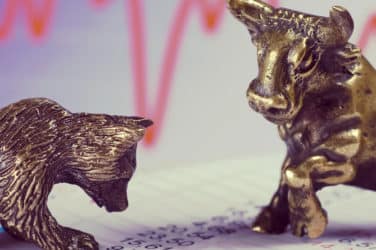
Lauri Rosendahl, senior vice president for European equities and president of Nasdaq Nordic, has a suitable international background for his role which includes responsibility for the operations of exchanges in seven countries.
Rosendahl was born in Finland but relocated to Sweden in 2016 for his current job overseeing Nasdaq exchanges in Helsinki, Copenhagen, Stockholm, Iceland, Riga, Tallinn and Vilnius. His global outlook is reflected in the strategy for the coming 12 months.
He told Markets Media: “The priorities over the next year are ensuring compliance with MiFID II, continuing and improving our listing success and creating an international flavour. We will also bring in new technology from our technology development hub in Stockholm and roll out distributed ledger technology applications for the region.”
MiFID II, the regulations coming into force in the European Union at the start of next year, will change market structure in the region and the way that many asset classes are traded. For example, there will be new venues and double volume caps on dark pool trading with exemptions for large-in-scale (LIS) trades above a certain size as specified by the European Securities and Markets Authority.

Lauri Rosendahl, Nasdaq Europe
Rosendahl said: “The hidden diamond in our services is that we introduced large-in-scale functionality in 2010 with our new INET trading platform. The buy side is increasingly interested in auction on demand and LIS trading as the cash equities landscape changes in Europe.”
In June Nasdaq announced the launch of Auction on Demand, which has been designed to meet MiFID II transparency requirements. The Auction on Demand order book runs in parallel to Nasdaq’s Nordic lit order books. A trader can place an order at any time for a periodic auction and when a match is found an auction uncross is triggered, and price and volume are made public.
“We have more than 15 members using Auction on Demand and a reasonable order flow,” added Rosendahl. “The real demand will come in the post-MiFID II world.”
Sven Andersson, head of electronic execution at Nordic financial services group SEB, said in a statement: “We believe that the service will help us handle large orders in a better and more efficient way. With MiFID II just around the corner, the need for trading services compliant with the new regulatory landscape is strong, and we believe that Auction in Demand is one of the better ways to be prepared.”
This month Turquoise, the pan-European MTF owned by the London Stock Exchange, also said it plans to launch frequent transparent auctions in the fourth quarter of this year. Turquoise Lit Auctions will be triggered when Turquoise receives matching orders from its members. Members then have a 50 millisecond window in which to submit any further orders to the auction before the start of a further 50 millisecond randomized uncrossing period.
Rosendahl believes that regulatory reform is moving in the right direction towards improving transparency and creating more lit electronic trading. “Despite all the work and headaches to comply with MIFID II, we will get better markets,” he said.
In addition to starting Auction on Demand this year, Nasdaq has also deployed machine learning technology for surveillance across its Nordic markets and launched voluntary economic, social and governance reporting proposals across its Nordic and Baltic venues.
The exchanges in Stockholm, Copenhagen, Helsinki and Iceland implemented machine learning within Nasdaq’s Smarts surveillance technology to analyze data and spot abnormal events, particularly during busy periods such as the market open and close. The machine learning capabilities will initially be used to prioritize the surveillance workflow as the technology predicts the likelihood that the event will lead to an action by an analyst.
“We believe it is a global first to use machine learning for surveillance in the Nordic markets,” said Rosendahl. “It allows for improved real-time surveillance and increases quality and efficiency.”
Nasdaq said the next stage will be to integrate machine learning technology into the Smarts offering for exchange and regulator clients worldwide. Rosendahl added: “In five years our technology will be very different. Nasdaq supplies technology to more than 80 exchanges and they will be using the new architecture of the Nasdaq Financial Framework.”
The Nasdaq Financial Framework was launched in 2016 so clients, such as exchanges, clearinghouses and central securities depositories, can easily integrate business applications, such as settlement, with new technologies such as blockchain.
Last month the SIX Swiss Exchange and Nasdaq, together with technology partner Chain, said they will be testing DLT for the Swiss venue’s over-the-counter structured products. Today SEB and Nasdaq announced a joint project to test a developed prototype for a mutual fund trading platform based on blockchain technology. Nasdaq has participated in the development of the Chain Open Standard though a variety of use cases, including private market securities, proxy voting and clearing. Chain Open Standard is an open source blockchain protocol for high-volume financial applications to run on permissioned networks while meeting regulatory requirements.
Another technology initiative was to merge three central securities depositories in Estonia, Latvia and Lithuania to create Nasdaq CSD. The new entity joined this month’s final migration wave to T2S, the platform which harmonizes securities settlement across the Eurozone.
“The integration of the Baltic CSDs was a huge project as the first cross-border merger of three CSDs,” added Rosendahl. ”It is the first step in building a competitive advantage in CSDs in Europe. Iceland will soon join and be on the T2S platform.”
One of the aims of T2S is to lower friction and costs of cross-border securities settlements in Europe and boost investment, as well as the prospects for a Capital Markets Union. T2S could increase demand for European bonds according to a research paper, The Future of Global Debt Issuance: 2025 Outlook, commissioned by Clearstream, the Luxembourg-based international central securities depository owned by Deutsche Börse Group, and produced by consultancy Aite Group.
Rosendahl continued that there is a big trend in listing green bonds and there could be more issuance from governments and corporates. Last month Nasdaq announced an ESG reporting pilot program for its Nordic and Baltic markets. The pilot runs for one year from September 1 and is open to 10 to16 companies of various sizes, market locations, and business sectors.
“Investors will become more and more demanding on sustainability information. We have a strong position in that Nordic large companies are leaders in ESG reporting but we need to educate medium and small companies,” he added. “They need to understand that ESG information will become a prerequisite for access to capital.”
He has taken the sustainability challenge personally as he does not own a car in Sweden and only uses an electric bike.
In addition to companies raising money in bond markets, Rosendahl said Nasdaq Nordic has experienced four consecutive years of increased initial public offerings and funds raised. He explained that one of the reasons behind the IPO success is that over the last 50 years, Stockholm has had the highest average annual real rate of return for investors of all the global exchanges of 8.62% per annum with Helsinki in second place and Copenhagen in fourth.
Rosendahl said: “We are seeing interest from other European countries on companies wanting to list on our growth market while junior markets were previously very local. We have had interest from the UK driven by Brexit worries.”






